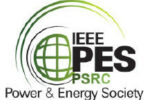Digital Twins and Digital Nameplates
by Tom Berry, Schneider-Electric

IEC TC 57 WG 17 is in charge of power system intelligent electronic device communication and associated data models for microgrids, distributed energy resources and distribution automation.
The phrase “Digital Twin” has become more and more popular in recent years and is now being applied to power systems. One of the key enablers for digital twins will be digital nameplates.
IEC has defined a digital twin as “a digital representation of a real-world entity or system – an evolving digital profile of the past or current behaviors of an object or process. In the energy sector for instance, digital twins are often real-time virtual representations of physical grid assets.” Ref: https://etech.iec.ch/issue/2022-03/digital-twins-and-the-smart-grid.
Real-time or near real-time twins are just one example of the application of a digital twin to help with situational awareness. Such systems combine measurements and model parameters to estimate the system state whether directly observable or not. This real-time estimate / digital twin is often used as the starting point to forecast future possibilities. Forecasting uses not only the static parameters of the equipment and systems, but also some form of model of the behavior over time.
There could be many types of digital twins for the same real-world equipment or system depending on what sort of behavior or forecasting timescale is of interest. The behavioral models for operational purposes over the timescale of seconds to hours could be quite different to the condition and ageing models based on environmental conditions over timescales of months to years.
This analysis of digital twins shows that the digital representation needs several aspects, including identification, static (name plate) characteristics, dynamic (controller) settings, real time status and measurements, and behavioral models. Today within IEC or IEEE standards, the different sorts of information are described in different documents authored by different technical committees.
For nameplate data used for design, there are technical committees responsible for each type of product or equipment. The CIM standards IEC 61970 and IEC 61968 address use cases for both long term and short-term planning and therefore include the parameters needed for network analysis or other applications. These may be expressed either for product types or for individual product instances.
For the real time monitoring and control use cases, the IEC 61850 series provides a rich set of the real time data, but today is very limited in describing the static characteristics. Further work is required before IEC 61850 can be used to store electronic nameplate within digital twins or the physical devices. An alternative is to follow the IT worlds and use JSON encoding of CIM based data.
IEC has produced a guide 111-1 that defines some common standards for describing high voltage equipment. This guide also has a proposal for electronic nameplates based on IEC 61850 concepts for the encoding. This approach has been adopted by IEC TC 17 to describe data for high-voltage switchgear within IEC 62271-3 (now under revision).
The same concepts could now be adopted for other product types, such as instrument transformers and power transformers.
It will be useful if the relevant terms are first formally described in the IEC vocabulary or Common Data Dictionary.
Biography:

Tom Berry studied Electrical Engineering at Bath University, UK. For the last 25 years he has worked for Schneider Electric in the UK and France.
Tom has worked on control center projects integrating SCADA systems within dispatch training simulators, transmission and distribution network management systems. He now works “closer to the edge” as a software architect for feeder automation RTUs. He is a member of several IEC TC57 WGs and the editor of IEC TS 62361-102 technical report on CIM-61850 harmonization.








